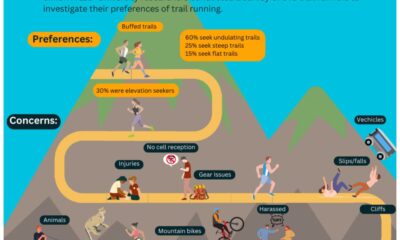Health
Research shows that lonely women experience increased activation in areas of the brain linked to food cravings

Credit: Unsplash/CC0 public domain
A new UCLA Health study found that women who consider themselves lonely show activity in areas of the brain linked to cravings and motivation to eat, especially when they see pictures of high-calorie foods, such as sugary foods. The same group of women also had unhealthy eating behaviors and poor mental health.
Arpana Gupta, Ph.D., researcher and co-director of the UCLA Goodman-Luskin Microbiome Center, wanted to explore the negative consequences of loneliness, especially as people continue to work remotely after the COVID-19 pandemic, and how the brain plays together with social isolation, eating habits and mental health.
While it is well established that obesity is linked to depression and anxiety, and that binge eating is considered a coping mechanism for loneliness, Gupta wanted to observe the brain pathways associated with these feelings and behaviors.
“Research on how the brain processes loneliness and how this relates to obesity and health outcomes has not yet been done,” said Gupta, senior author of the paper, published in JAMA network opened.
The researchers surveyed 93 women about their support system and their feelings of loneliness and isolation, then divided them into two groups: those who scored high on the perceived social isolation scale, and those who scored low.
The researchers found that women with higher levels of social isolation tended to have higher fat mass, lower diet quality, increased food cravings, reward-based eating and uncontrolled eating, and increased levels of anxiety and depression.
The women were then shown images of food versus non-food, sweet food versus non-food and savory food versus non-food. MRI scans recorded the participants’ brain activity while they viewed these images.
The researchers found that the group of women who perceived themselves as lonely experienced increased activation in brain regions associated with greater cravings for sugary foods, and decreased activation in brain regions associated with self-control over eating behavior.
“These findings are interesting because they provide evidence for what we know intuitively,” said Gupta. “When people are alone or lonely, it affects more than how they feel; they underreport what they eat, their desire to eat and their cravings for especially unhealthy foods.”
“When you feel more hungry, you eat more and you may experience more anxiety or depression, which can lead you to eat more,” said Xiaobei Zhang, postdoctoral researcher and lead author, likening this path to a “vicious cycle between unhealthy eating and negative eating.” mental symptoms.”
The researchers say holistic mind-body interventions could be a solution to break the cycle. Examples of this are realizing that you are lonely and, depending on the person, seeking connection with others or practicing self-compassion. Another suggestion is to make healthier food choices.
“Instead of reaching for that highly addictive, sugary, high-calorie food you’re craving, maybe try going for healthy foods instead of bad foods,” said Gupta.
Gupta’s future research will focus on looking at other biological markers such as the metabolites, microbiome and inflammatory signatures associated with loneliness.
More information:
Social isolation, processing of signals from the brain, eating behavior and mental health symptoms, JAMA (2024). DOI: 10.1001/jamanetworkopen.2024.4855. jamanetwork.com/article.aspx?d … etworkopen.2024.4855
Quote: Research shows lonely women experience increased activation in brain regions linked to food cravings (2024, April 4) retrieved April 20, 2024 from https://medicalxpress.com/news/2024-04-lonely-women- regions-brain-food.html
This document is copyrighted. Except for fair dealing purposes for the purpose of private study or research, no part may be reproduced without written permission. The content is provided for informational purposes only.













